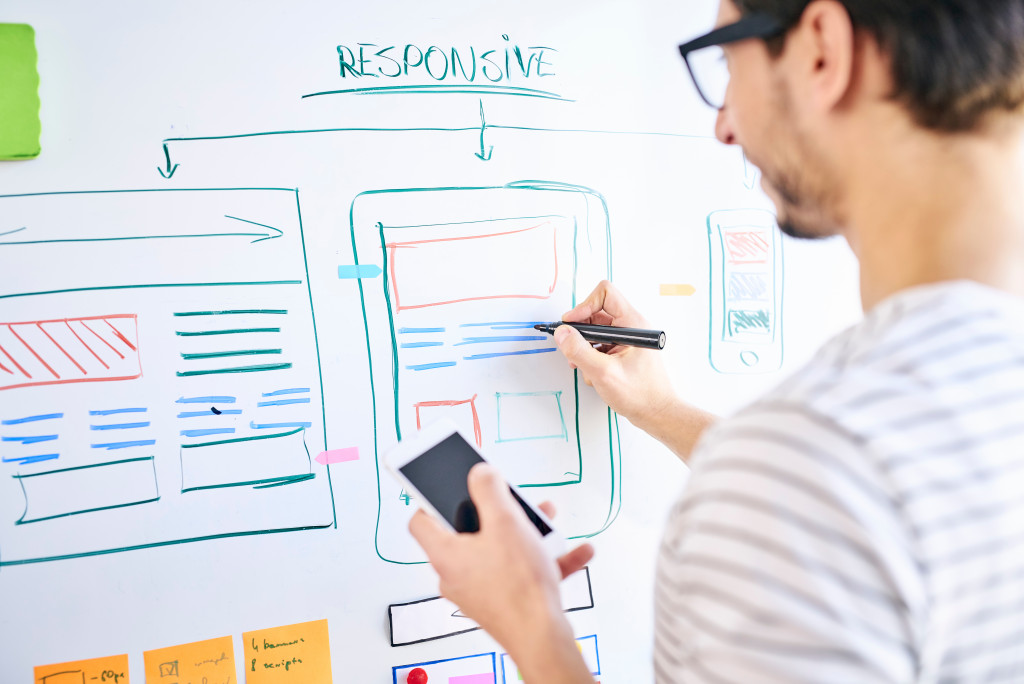Websites these days have come a long way ever since “programmers” wrote the first “Hello, world!” on their landing pages and used heavy graphics like animations and photos to make theirs look cool.
By now, marketers, web designers, and even some entrepreneurs understand that there’s more to websites than making them eye candy. They need to have value and purpose. They should meet the objectives of creating them, whether they are to inform or convert leads to customers.
Most of all, websites need to be a pleasing experience to their users. Otherwise, they won’t be coming back again. It’s really no different from walking into a run-of-the-mill retail shop. When you feel it has nothing much to offer, you go out and move somewhere else.
Any reliable web design company knows that to make a site customer-centric, it should have two factors: user interface (UI) and user experience (UX). The problem is not casual people know about their similarities and differences.
That’s what we’re going to talk about here.
Spelling the Differences between UX and UI
No one will fault you if this is your first time to hear both terms. If you did, you are still not to blame if you confuse one over the other or use either of the compound words interchangeably.
In reality, they are not the same, although they can have a single end goal, as you will learn later. So what’s the difference between UX and UI?
User experience design is a process of creating products and services based on a customer-first approach. Based on the definition by Oxford Journal Interacting with Computers, it is about designing something that will please the customers.
Contrary to what most people believe, UX isn’t only applicable to tech-driven products, like websites, apps, or software. It may also work on physical products.
A perfect example is the bottle design of Heinz ketchup. There are two. One is the glass bottle that features a shorter neck compared to its original shape and holds about 14 ounces of the product. The other is the plastic squeeze bottle, which has an opening at the bottom inside of the top.
Many people often complain about getting the ketchup out in the glass bottle. But Heinz actually pointed out that it’s much easier than they think: they can tap the ’57 marker to move the ketchup out. It seems much of the semi-solid product accumulates here.
The plastic design came way later in the 1980s. Offering this option now allows children to use ketchup by themselves. Parents won’t have to worry about glass bottles slipping from tiny hands and smashing on the floor. The upside-down bottle, meanwhile, appeared in the 2000s. The reason: people won’t have to wait for ketchup to drop to the opening anymore.

Focusing on UX means designing a website, mobile app, or platform with the following criteria in mind:
• Ease of use
• Efficiency
• Accessibility
• Value
• Desirability
Customers should be able to experience all these factors from start to finish. Otherwise, the product fails to achieve its objective. For example, if it takes only three seconds to load a page but over 5 minutes to process an order, the potential buyer will likely abandon the cart.
How about User Interface?
User interface design refers to the process of designing the aesthetic elements of a product. Unlike UX, UI applies only to digital ones since it mainly deals with typography, layouts, graphic design, color schemes, and overall visual feel.
Now, why does this require a separate field? There are many reasons:
• Many people are visual learners, and what they see can influence the way they process and store information. These data may help them decide to buy a product or not.
• Pages need to be more accessible to everyone, including those who may have challenges with their vision.
• Although it isn’t an exact science, color psychology can still impact the mind.
• The right visual elements can make a brand. Why is it easy for you to spot Coca-Cola among a sea of sodas? You are familiar with the font style and color.
Coming Together
A person can be a master of UX and not UI and vice versa. Some great web design companies can do both. Either way, while they may seem like two separate processes, they are still interdependent and work toward one goal: to provide an amazing customer experience. In fact, UX won’t work when you have a poor UI, and UI is useless if UX design isn’t consistent.
